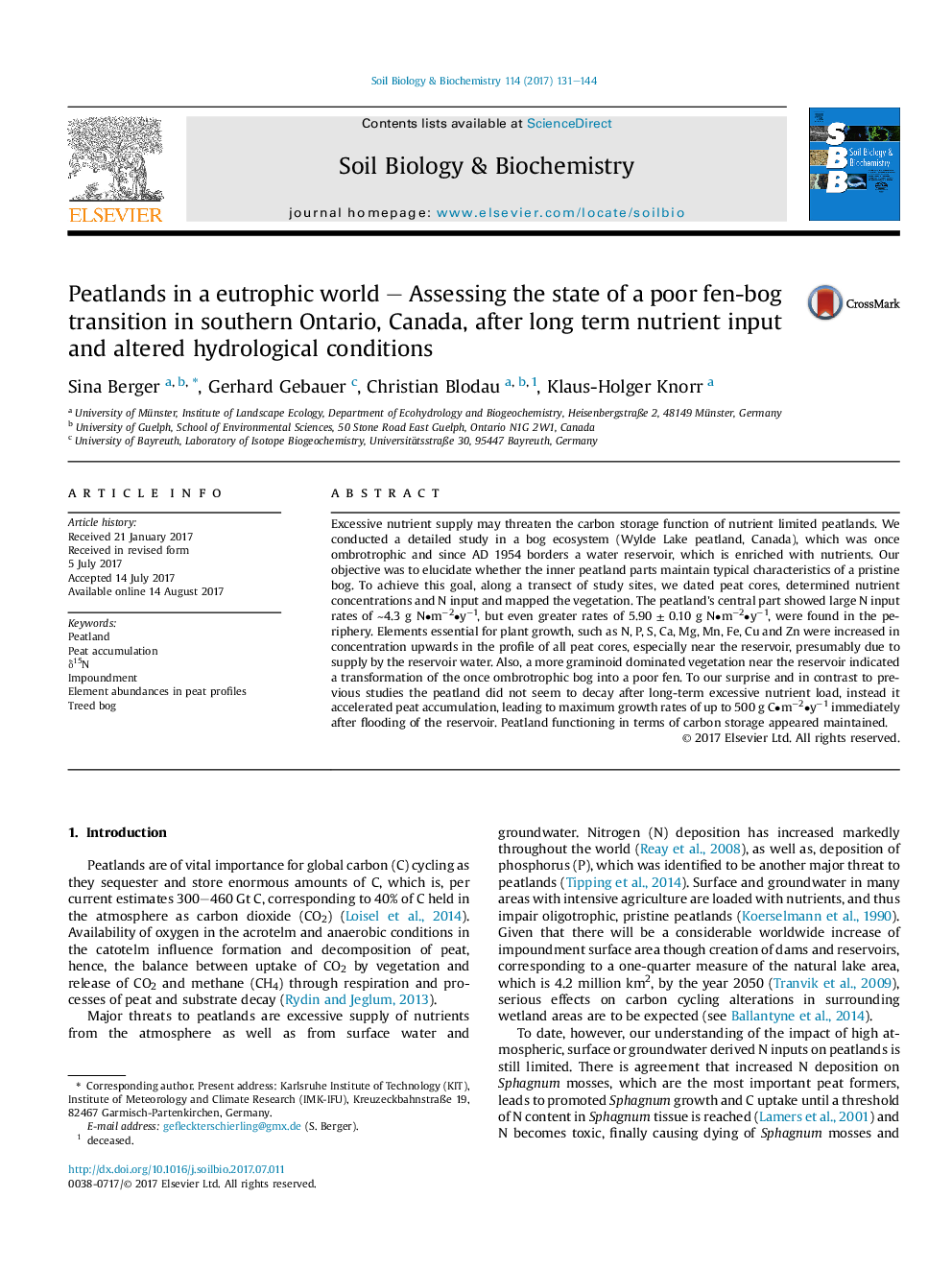| کد مقاله | کد نشریه | سال انتشار | مقاله انگلیسی | نسخه تمام متن |
|---|---|---|---|---|
| 5516314 | 1542570 | 2017 | 14 صفحه PDF | دانلود رایگان |
- A eutrophied peatland continues storing tremendous amounts of C throughout decades.
- Peatland periphery partly buffers infiltration of nutrients.
- Despite P, Ca and Mg supply, their limited availability in surface peat was detected.
- Various dramatic vascular plant abundance changes appear in bog/fen transition area.
Excessive nutrient supply may threaten the carbon storage function of nutrient limited peatlands. We conducted a detailed study in a bog ecosystem (Wylde Lake peatland, Canada), which was once ombrotrophic and since AD 1954 borders a water reservoir, which is enriched with nutrients. Our objective was to elucidate whether the inner peatland parts maintain typical characteristics of a pristine bog. To achieve this goal, along a transect of study sites, we dated peat cores, determined nutrient concentrations and N input and mapped the vegetation. The peatland's central part showed large N input rates of â¼4.3 g N
- mâ2
- yâ1, but even greater rates of 5.90 ± 0.10 g N
- mâ2
- yâ1, were found in the periphery. Elements essential for plant growth, such as N, P, S, Ca, Mg, Mn, Fe, Cu and Zn were increased in concentration upwards in the profile of all peat cores, especially near the reservoir, presumably due to supply by the reservoir water. Also, a more graminoid dominated vegetation near the reservoir indicated a transformation of the once ombrotrophic bog into a poor fen. To our surprise and in contrast to previous studies the peatland did not seem to decay after long-term excessive nutrient load, instead it accelerated peat accumulation, leading to maximum growth rates of up to 500 g C
- mâ2
- yâ1 immediately after flooding of the reservoir. Peatland functioning in terms of carbon storage appeared maintained.
Journal: Soil Biology and Biochemistry - Volume 114, November 2017, Pages 131-144
